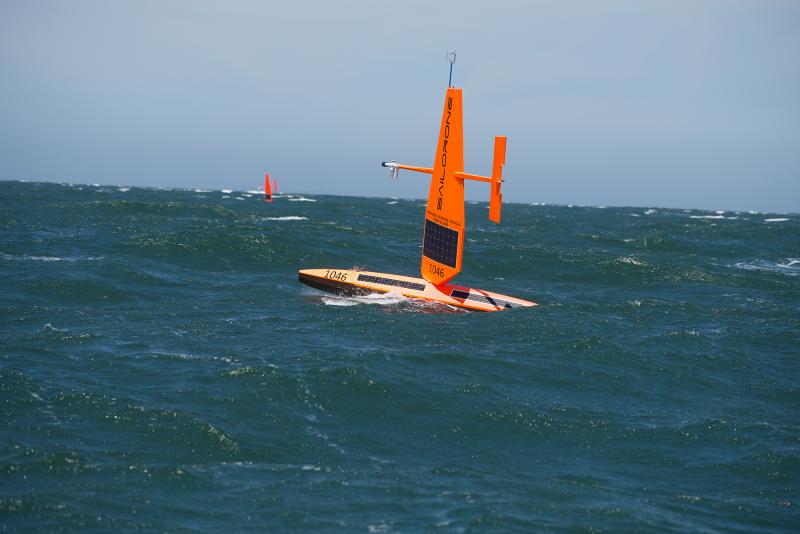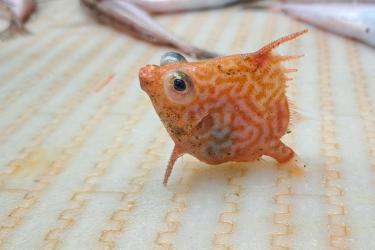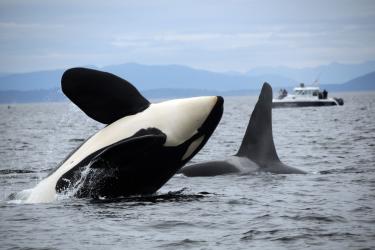As we continue to deal with the challenges of a global pandemic, NOAA Fisheries will continue to feel the impacts of COVID-19 on our science mission. However, I want to assure you that we remain committed to our work and are working through the obstacles with the latest health and safety information, and to the best of our abilities.
Progress During COVID-19
As other federal agencies have done, our employees have successfully transitioned to telework and put safety protocols in place to continue mission-critical laboratory and field research as conditions allowed. In fact, research staff who did go into the field in 2020 commented that they felt safe, appreciated being part of a “quaranteam,” and were successful in their missions. At NOAA, our COVID response allows us to increase or decrease data collection activities based on local COVID-19 conditions—a process that balances productivity and safety.
Our research staff working from home have also adapted and renewed their energy for priority “desk work” such as publishing research, entering and analyzing historical data entry, and gleaning new information from videos collected during previous fish surveys to support species and ecosystem assessments.
And as expected, when presented with a problem, our scientists, aided by dedicated support teams, have found innovative ways to help us meet our mission objectives. For example, we used uncrewed systems in place of staffed ship surveys to assist in providing a biomass estimate of pollock in the eastern Bering Sea as well as other projects. We are also working on advances in next generation stock assessments and quantitative approaches to deal with unavoidable reduction in survey and sampling efforts. Likewise, staff have found creative approaches to safely distribute samples to age fish otoliths (inner ear structure), identify larval fishes, etc., using microscopes at home.
Challenges During COVID-19
The most difficult challenge is a personal one. Caring for families and loved ones is at the top of our employees’ minds, at times placing care for themselves a distant second. Professionally, we all feel and share the frustration of lost fieldwork and associated data resulting from cancelled research cruises and surveys and the inability to safely conduct other activities such as marine mammal necropsies and life-saving interventions for threatened and endangered species.
Despite a robust process for handling activities during the pandemic, the decisions to continue, pause, or cancel activities are difficult at all levels, and planning efforts with the pandemic’s uncertainty are proving to be quite complicated. However, I remain in awe that despite sustained personal hardships and the frustration of canceled fieldwork and lost data, our employees’ tenacity and ingenuity keeps our mission going.
Looking Ahead: Our 2021 Priorities
The bottom line is that our core science mission remains constant, and we are working diligently to make progress in priority areas including:
-
Adequately assessing all prioritized stocks and maintaining information for currently assessed stocks.
-
Modernizing fishery information collection, management, and dissemination systems, and enhancing cooperative data collection and sharing.
-
Building next generation analytical tools using biophysical and oceanographic information to predict when and where IUU fishing is likely to occur.
-
Improving the ability to track recovery performance of protected species.
-
Developing and promoting the use of tools to model and forecast changing ecosystems and anthropogenic impacts on marine and anadromous resources.
Looking ahead, we are hopeful that the challenges presented by the pandemic start to ease in 2021 for everyone, and our staff can safely return to all of our science and data activities: collecting data, gathering samples, and conducting experiments. If we’ve learned any lessons, we’ll likely hold on to some newly-discovered efficiencies, such as using uncrewed technologies for survey work, cooperative research with the fishing industry, the inclusivity of virtual meetings, and more.
Lastly, I want to thank our partners for their support and understanding and our employees for their passionate dedication to the mission during a time that is challenging, frustrating, and stressful both at work and at home. That passion for healthy ocean life keeps us forging ahead and getting the job done.
To your health and sound science in 2021,
Cisco Werner
Director of Scientific Programs and Chief Science Advisor




